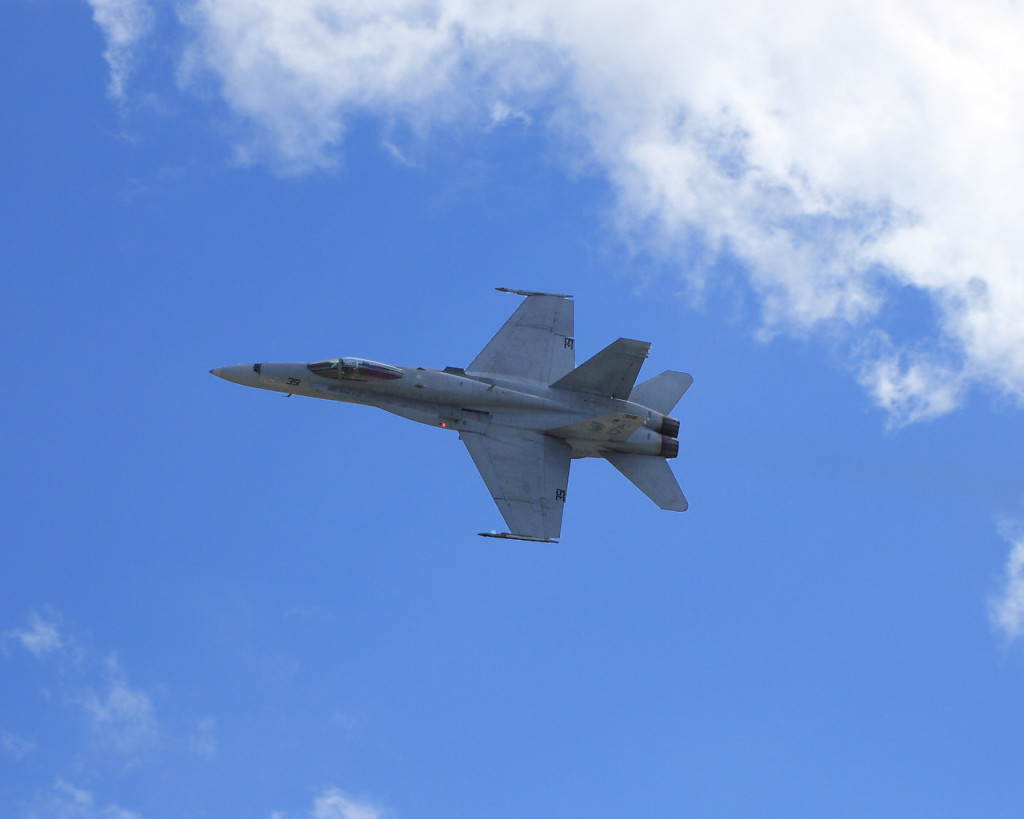

In July, The New Yorker magazine published a cogent analysis by writer Steve Coll examining the options available to address the ongoing tragedy in Syria. Coll’s article was written with the insight and authority that those of us who have read Ghost Wars and The Bin Ladens have come to enjoy. He captured the profound dilemma confronting President Obama, who seems motivated by well-meaning intentions to seek to ameliorate the plight of civilians and non-combatants in Syria. There are many things the US can do short of full-scale military intervention, but each brings with it a range of prospective pitfalls. Coll’s recommendation for a kind of no-fly zone “light” is really the least bad option in a range of “lose-lose” options facing our leaders. But given the humanitarian impulses that increasingly form the principal justification for action in Syria, the question remains: can a no-fly zone work?
I policed several no-fly zones during my Navy career flying electronic reconnaissance aircraft over Bosnia (1995-1996) and Southern Iraq (1995). Based on these experiences, my view is that they are an extremely poor means of limiting atrocities against non-combatants.
From an aviator’s perspective, the difficulties associated with policing no-fly zones are manifold. One must not just detect a possible violator, but must also assess the possible violator’s motive. And herein lies the problem: motive is almost impossible to ascertain until it is too late. First, if one is required to wait to interdict a no-fly zone violator until motive is clear, the offending aircraft has probably delivered its munitions. Second, the decision of whether to shoot down (or attempt to shoot down) an offending aircraft after the crime is less clear than it might seem. Does engaging an offending aircraft deter the others? Maybe, maybe not. But by shooting down the offender there is also the potential for collateral damage that the pilot must consider, since it is likely that the site targeted by the offending aircraft is not unitary but surrounded, as is normal in urban areas, with other non-combatants. Finally, since non-combatants, particularly in a conflict with no clear front lines, are often contiguous with, or even integrated into, legitimate military targets, the distinction between military and civilian targets becomes a blurred one, as well. The bottom line is that the political leaders who apply a no-fly zone inevitably put the pilots who enforce it into a difficult situation. In addition to putting their lives on the line, the aviators who fly patrolling aircraft are asked to ensure that their immediate, tactical decisions do not prompt a crisis that might further exacerbate tensions and lead to deeper, unintended involvement in the conflict. During my three deployments patrolling and monitoring Southern Watch in Iraq, this was the exact scenario that haunted senior leaders.
Aside from these tactical considerations, imposing a no-fly zone carries strategic challenges, as well. Even if the no-fly zone’s introduction is justified on purely humanitarian grounds, it will very likely be seen as a first step toward entering the war on the side of the rebels against the regime, a momentum that may be difficult to arrest. Additionally, it could ultimately lead, as it has in the past, to criticism from all sides of the no-fly zone “policemen,” a lose-lose scenario nested within a bigger lose-lose scenario. Coll gets at this conundrum and seems to imply that the first rule of intervention in Syria must be “to do no [further] harm.” Trying to prevent harm with no-fly zones, unfortunately, violates this basic rule.
John T. Kuehn is currently the General William Stofft Professor of Military History at the US Army Command and General Staff College andhas served on the faculty their since July 2000, retiring as a commander in 2004. He earned a Ph.D. in History from Kansas State University in 2007. He is the author of Agents of Innovation (2008) and co-authored Eyewitness Pacific Theater (2008) with D.M. Giangreco, as well as numerous articles and editorials.
Photo Credit: Dread Pirate Jeff
